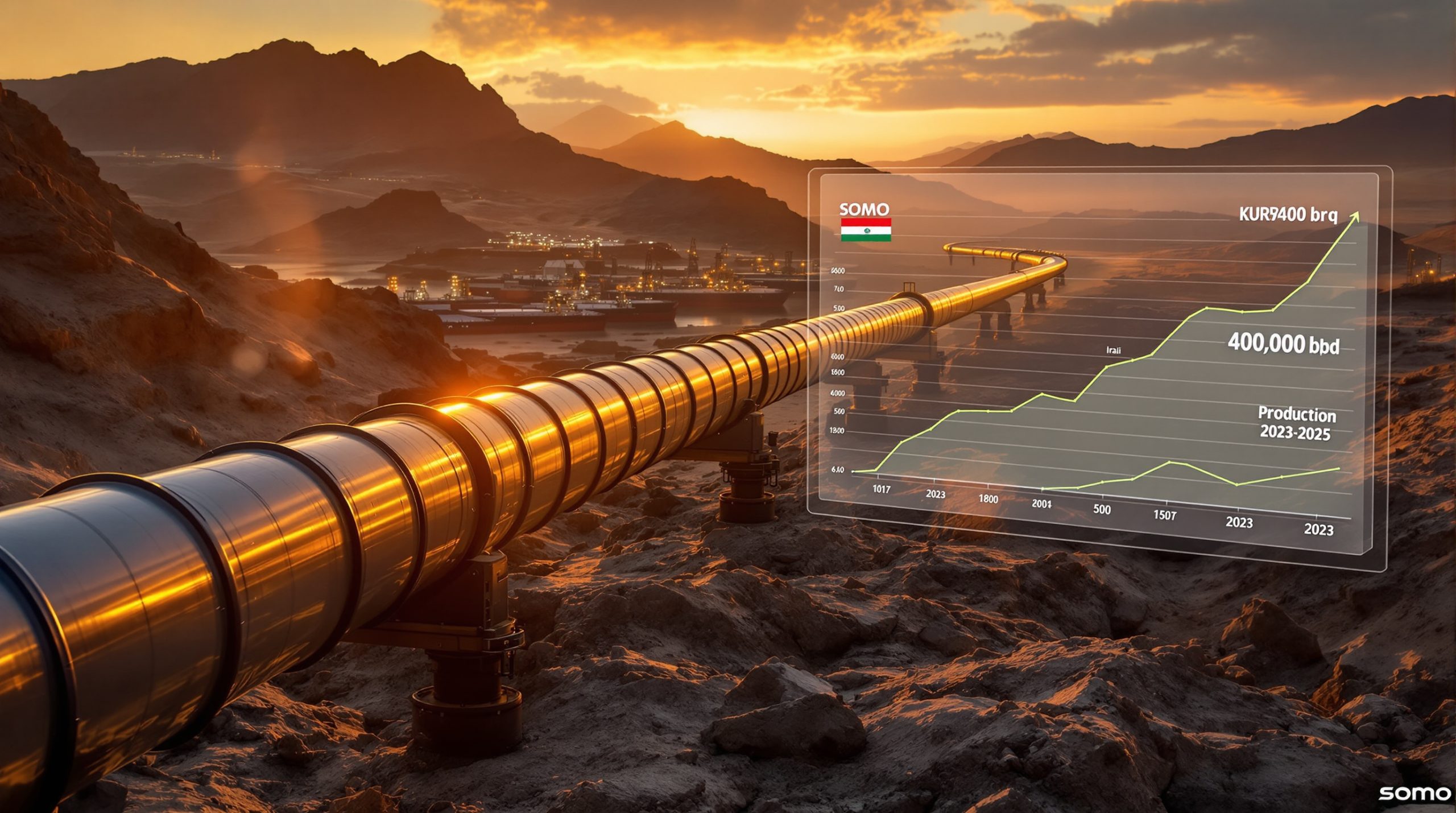How Will the Israel-Iran Conflict Impact Global Oil Markets?
The escalating tensions between Israel and Iran have raised serious concerns about potential disruptions to global oil supplies. With over 20 million barrels of crude passing through the Strait of Hormuz daily, any blockade or military action in this critical chokepoint could send shockwaves through energy markets worldwide. Recent events highlight this volatility – oil price movements surged more than 3% following Israel's strike on Iran's Natanz enrichment facility, demonstrating how quickly markets react to regional developments.
Energy analysts estimate that a full blockade of the Strait of Hormuz could send oil prices soaring to between $100 and $150 per barrel – potentially doubling current market prices. Such a dramatic increase would have cascading effects on global inflation, economic growth, and geopolitical stability.
"The Strait of Hormuz represents the single most vulnerable chokepoint in global energy supply chains, with limited immediate alternatives for the volume it handles daily." – Energy security experts cited by Oilprice.com
Despite these concerns, many analysts remain skeptical that Iran would take the extreme step of closing the strait. Such action would not only alienate other oil-importing nations but would likely trigger immediate military intervention from the United States and its allies, potentially escalating the conflict beyond Iran's interests.
What Are India and Pakistan Doing to Prepare for Oil Supply Disruptions?
India's Strategic Response to Potential Supply Shortages
India, as the world's second-largest crude oil importer, faces significant vulnerability to Middle East supply disruptions. Approximately 40% of India's crude oil and 54% of its LNG imports would be directly affected if the Strait of Hormuz were to close. This exposure has prompted urgent contingency planning among Indian energy officials.
Top oil ministry officials and industry executives have been evaluating possible supply alternatives, with Indian refiners actively exploring options from West African producers like Nigeria and Angola. These alternative sources could help offset potential shortages, though logistical challenges remain significant.
Despite these concerns, Indian energy executives remain cautiously optimistic that Iran will not enforce a complete blockade of the strait, citing historical precedent. They recognize that such a move would likely trigger a dramatic surge in oil price stagnation and potentially draw the United States into direct confrontation with Iran.
Pakistan's Contingency Planning for Energy Security
Pakistan faces similar vulnerabilities and is taking decisive action to secure its energy supplies. Top energy officials are negotiating with international suppliers for alternative oil sources, with particular focus on pipeline oil supplies from the UAE and Saudi Arabia as contingency measures.
One innovative approach being considered involves repurposing storage capacity in abandoned power plants, which could potentially hold up to one million tons of oil. This creative solution demonstrates Pakistan's commitment to enhancing its energy security infrastructure.
Prime Minister Shehbaz Sharif has established a dedicated committee to monitor the evolving situation and evaluate its impact on Pakistan's oil market. This high-level government involvement underscores the seriousness with which Pakistan views potential supply disruptions.
What Would Happen if the Strait of Hormuz Closes?
Potential Price Surge and Global Market Disruption
The Strait of Hormuz serves as a critical chokepoint for global oil trade, with more than 20 million barrels of crude passing through daily. Energy experts estimate that a blockade could send oil prices soaring to between $100 and $150 per barrel, representing a significant increase from current levels.
Such a price shock would have far-reaching consequences beyond the immediate region:
- Global inflation: Higher energy costs would drive up prices across all economic sectors
- Transportation costs: Shipping rates have already surged 60% amid rising tensions
- Economic growth: Many economies could face recession pressure from sustained high energy prices
- Political instability: Countries dependent on fuel subsidies would face difficult choices
The ripple effects would be particularly severe for oil-importing nations with limited strategic reserves and high dependency on Middle Eastern supplies.
Strategic Reserves and Supply Alternatives
India maintains strategic crude reserves sufficient to meet approximately 9.5 days of demand, with total crude and petroleum product storage capacity covering about 74 days of consumption. While significant, this falls short of the International Energy Agency's recommendation for 90 days of reserves, highlighting India's continued vulnerability.
Most concerning is India's lack of comparable strategic gas storage facilities. As Oilprice.com notes, "The global LNG market is much less evolved than crude markets," making it particularly difficult to secure alternative gas supplies during disruptions. This structural limitation highlights the importance of diversifying energy sources and investing in storage infrastructure.
For Pakistan, the contingency plan to repurpose abandoned power plants for oil storage represents an innovative approach to building resilience, though implementation timelines remain unclear.
How Are Countries Diversifying Their Oil Supply Sources?
India's Pivot to Russian and Alternative Suppliers
India has already demonstrated its ability to adapt to changing geopolitical circumstances by becoming the largest importer of Russian oil, surpassing China in 2024. This strategic shift provides India with valuable supply diversity, as Russian crude shipments traditionally avoid the Strait of Hormuz due to longstanding tensions between the United States and Iran.
"For years, Russia's crude exports to India have been avoiding the Strait of Hormuz due to long-standing tensions between the United States and Iran." – Oilprice.com
Beyond Russia, India is exploring opportunities in emerging oil producers like Guyana. During a visit last year, Prime Minister Narendra Modi identified the South American nation as key to India's energy security strategy. Guyana's Natural Resources Minister Vickram Bharrat has expressed willingness to supply crude to India, pending agreement with Exxon Mobil, the main operator in the country's offshore production.
This diversification strategy demonstrates India's proactive approach to reducing its vulnerability to Middle Eastern supply disruptions.
Long-Term Strategies for Energy Independence
Both India and Pakistan recognize that true energy security requires reducing dependence on imports through increased domestic production. India's four major basins potentially hold up to 22 billion barrels of crude—more oil than the remaining reserves in the Permian Basin, according to S&P Global Commodity Insights. However, the country has explored only 10% of its 3.36 million square kilometer sedimentary basin.
Financial analysts at Motilal Oswal have suggested that boosting local production could also help India circumvent potential tariffs from the Trump administration while strengthening the rupee, which is weakened by heavy reliance on oil imports.
The challenge remains developing these resources efficiently while balancing environmental concerns and investment requirements. Nevertheless, both countries recognize that domestic production represents the most sustainable path to long-term energy security.
What Role Do Strategic Oil Reserves Play in Crisis Management?
Current Storage Capacity and Limitations
Strategic petroleum reserves represent a critical buffer against supply disruptions, providing countries with time to secure alternative sources during crises. India's strategic reserves can meet 9.5 days of demand, while its total storage capacity for crude and petroleum products covers approximately 74 days.
This capacity, while significant, falls short of the International Energy Agency's recommendation that member countries maintain reserves equivalent to 90 days of net imports. The disparity highlights the need for continued investment in storage infrastructure.
Countries typically utilize these reserves through coordinated releases during major supply disruptions, helping to stabilize markets and prevent price spikes. The effectiveness of this approach depends on:
- Reserve volume: Total barrels available for release
- Withdrawal capacity: Daily maximum extraction rates
- Coordination: International alignment on timing and volume
- Market perception: Psychological impact on traders and speculators
India's continued expansion of its strategic reserve capacity demonstrates its commitment to enhancing energy security.
Gas Storage Challenges and Vulnerabilities
Unlike crude oil, natural gas presents unique storage challenges due to its physical properties and the specialized infrastructure required. India's lack of strategic gas storage facilities represents a significant vulnerability, particularly given its growing dependence on imported LNG.
The less developed global LNG market further complicates efforts to secure alternative supplies during disruptions. While crude oil can be relatively easily rerouted on tankers to different destinations, LNG requires specialized terminals, regasification facilities, and long-term contracts that limit flexibility.
This vulnerability highlights the importance of diversifying gas supply sources and investing in domestic production capabilities. India's continued expansion of its regasification capacity represents an important step toward enhancing gas security, but strategic storage remains a critical gap.
How Would a Regional Conflict Affect Global Shipping Routes?
Maritime Security Concerns and Insurance Costs
Beyond the direct impact on oil supplies, regional conflict threatens to disrupt global shipping routes and drive up insurance costs for vessels operating in affected areas. The recent 60% surge in tanker rates demonstrates how quickly market conditions can change in response to heightened tensions.
Shipping companies typically respond to increased risk by:
- Charging "war risk premiums" on freight rates
- Rerouting vessels around conflict zones
- Implementing additional security measures
- Seeking naval escorts in high-risk areas
These increased costs ultimately filter through to consumers in the form of higher energy prices, contributing to inflationary pressures across the global economy impact. The situation highlights the interconnected nature of global energy markets and the far-reaching consequences of regional conflicts.
Shell's CEO recently warned of broader supply chain disruptions beyond just energy markets, indicating the potential for wider economic impacts if the conflict escalates.
Alternative Shipping Routes and Logistical Challenges
While alternative shipping routes exist, they often involve longer transit times and higher operational costs. For countries like India and Pakistan, securing oil supplies through these alternative channels would require significant logistical adjustments and potentially higher import expenses.
Key alternative routes include:
- The Cape of Good Hope (around Africa)
- The East-West Pipeline across Saudi Arabia to Red Sea ports
- The Abu Dhabi Crude Oil Pipeline to Fujairah
- Northern routes through Turkey
However, these alternatives have limited capacity compared to the volume that flows through the Strait of Hormuz daily. The situation underscores the strategic importance of developing multiple supply corridors and transportation options to enhance energy security and resilience against regional disruptions.
What Are the Economic Implications of Oil Price Volatility?
Impact on Currency Stability and Inflation
For oil-importing nations like India and Pakistan, price volatility presents significant macroeconomic challenges. Sharp increases in oil prices typically weaken domestic currencies, as more foreign exchange is required to purchase the same amount of oil. This currency depreciation can trigger inflationary pressures throughout the economy.
India's heavy reliance on oil imports has historically placed pressure on the rupee during periods of price volatility. When oil prices rise, India must spend more of its foreign currency reserves on energy imports, which can lead to:
- Widening current account deficits
- Depreciating currency values
- Rising domestic inflation
- Higher interest rates to defend the currency
Reducing this dependence through increased domestic production represents a strategic priority for long-term economic stability. As Motilal Oswal noted, boosting local production could help strengthen the rupee by reducing foreign exchange outflows for oil imports.
Budget Pressures and Subsidy Considerations
Higher oil prices also strain government budgets, particularly in countries where fuel subsidies are politically important. Both India and Japan have recently implemented measures to shield consumers from soaring gasoline prices, highlighting the social and political dimensions of energy security.
These subsidies, while providing short-term relief, can create fiscal challenges if sustained over extended periods. Governments typically face difficult tradeoffs between:
- Protecting consumers from price shocks
- Maintaining fiscal discipline
- Investing in long-term energy security
- Supporting economic growth
Balancing these competing objectives represents a complex policy challenge during energy crises. Countries with more diversified energy sources and robust strategic reserves generally have greater flexibility in responding to price volatility.
FAQ: Oil Supply Disruptions and Global Markets
Could Iran actually close the Strait of Hormuz?
While Iran has the military capability to disrupt shipping through the Strait of Hormuz, a complete blockade would likely trigger international intervention and severely damage Iran's own economy, which relies heavily on oil exports. Most analysts believe Iran would only attempt such a move as a last resort in an existential conflict.
How quickly could global oil prices respond to a Middle East conflict?
Oil markets typically react immediately to geopolitical developments, with prices potentially surging 10-20% within days of a major disruption. The recent 3% price increase following Israel's strike on Iran's Natanz enrichment facility demonstrates this sensitivity. If the Strait of Hormuz were blocked, prices could potentially reach $100-150 per barrel within weeks.
What alternative oil supply routes exist beyond the Strait of Hormuz?
Several alternative routes exist, including the East-West Pipeline across Saudi Arabia to Red Sea ports, the Abu Dhabi Crude Oil Pipeline to Fujairah, and northern routes through Turkey. However, these alternatives have limited capacity compared to the 20+ million barrels that flow through the Strait of Hormuz daily.
How are other Asian economies preparing for potential oil supply disruptions?
Japan has implemented measures to shield consumers from soaring gasoline prices, while China continues to stockpile crude oil as part of its long-term energy security strategy. South Korea and other regional economies are closely monitoring the situation and evaluating their strategic reserves and supply alternatives.
Conclusion: Navigating Uncertainty in Global Energy Markets
The current geopolitical tensions between Israel and Iran highlight the complex interdependencies of global energy markets and the vulnerability of countries heavily reliant on Middle Eastern oil. While immediate disruptions remain uncertain, prudent planning for alternative supplies and strategic reserves represents essential risk management for oil-importing nations.
For India and Pakistan, the situation underscores the importance of accelerating domestic production, diversifying supply sources, and investing in storage infrastructure. These long-term strategies, combined with short-term contingency planning, will be crucial for navigating the uncertain waters of global energy markets in the years ahead.
The coming months will likely see continued volatility in oil futures outlook as markets respond to evolving geopolitical developments. Countries that have prepared robust contingency plans and diversified their energy sources will be best positioned to weather potential disruptions and maintain economic stability.
The experiences of India and Pakistan in bracing for oil price surges and seeking new suppliers offer valuable lessons for other oil-importing nations facing similar challenges in an increasingly unpredictable global energy landscape. The ongoing situation also highlights the significant OPEC market influence in stabilizing or exacerbating price volatility during geopolitical crises.
Want to Protect Your Portfolio from Oil Market Volatility?
Discover how to safeguard your investments against unpredictable energy markets with Discovery Alert's proprietary Discovery IQ model, which provides real-time alerts on significant mineral discoveries and diversification opportunities. Visit the Discovery Alert discoveries page to learn how strategic resource investments can balance your portfolio against oil market uncertainty.




